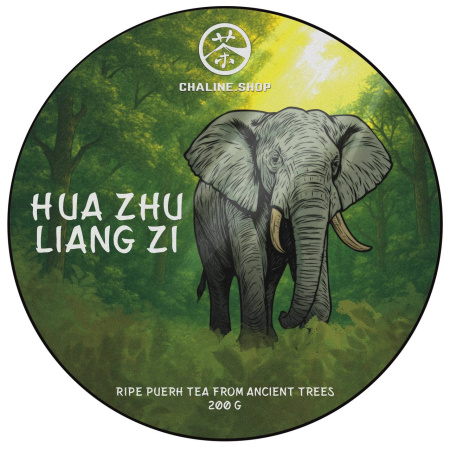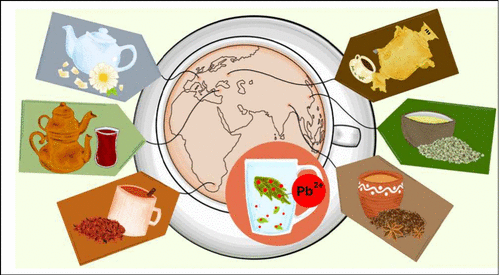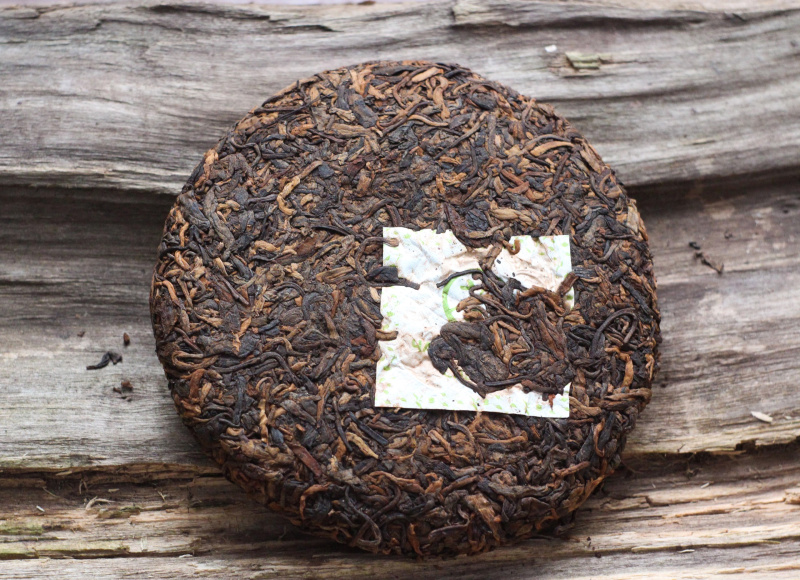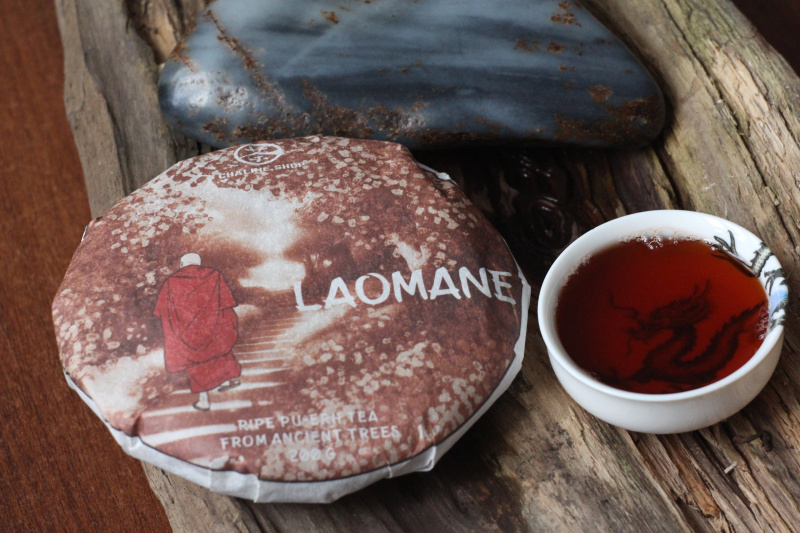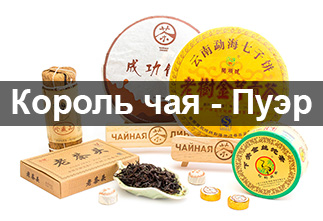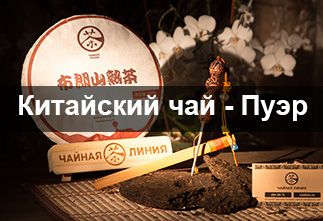Это высочайшая точка округа - высота над уровнем моря свыше 2000 метров.
Здесь в диких условиях, растут старые чайные деревья (возраст от 100 до 1500 лет) на отвесных склонах, в естественных условиях, в полном симбиозе с другими растениями. Здесь чистейшая экология, поблизости нет поселений человека, ни производств, нет даже автомобильных дорог.
Встречаются деревья Гу Шу, внушительные, длинноствольные, чьи кроны окутаны густыми туманами.
Для производства этого шэн пуэра, мы выбрали сырьё с больших деревьев (разного возраста от 100 до 300 лет) с длинными и толстыми стволами, которое было обработано мастером Сянь Да (кит. 先大, xiān dà).
Вкус шэн пуэра со старых деревьев из Хуа Чжу Лян Цзы - это мощная цветочная палитра. Это ваниль, персик, это дикорастущая ежевика, которая частенько нам попадалась на горных тропах. На послевкусии - ноты лесного дуплового мёда, переплетённые с тропическими фруктами.
Этот чай оставляет волшебный чайный эффект... видимо сказывается дикорастущая, экологически чистая среда произрастания лесных чайных деревьев, которые растут на склонах, часто в борьбе с другими местными деревьями.
Это сила, но сила мягкая, родная. Это лёгкость, это детская мечта.
Эффект опьянения подобен тому, который даёт редчайшее выдержанное вино: тело испытывает сильнейшее расслабление, но ум ясен и свеж! Очень интересный и честный опыт!
Шэн пуэр со старых деревьев горы "Хуа Чжу Лян Цзы" марки "Чайная Линия" - моносортный, некупажированный пуэр коллекционного уровня с огромным потенциалом.
|
Country
|
China |
|
Provinces
|
Yunnan (云南) |
|
Habitat
|
Хуачжу Лянцзы (滑竹梁子, huázhú liángzi) |
|
Altitude
?
Height in meters |
2004 |
|
Manufacturer
|
ООО "Чайная Линия" |
|
Raw material production date
|
2025 |
|
Year of pressing
|
2025 |
|
Pressing form
|
Bing Cha (Cake Tea) |
|
Declared weight, g
|
200 |
|
Fermentation method
|
Естественная |
|
Type of tea raw material
|
Large trees (100-300 years) |
|
Master's name
|
Сянь Да (кит. 先大, xiān dà) |
- Comments
- Vkontakte
Pu-erh is one of the most unique types of tea, which only gets better with age. Many people, when they first encounter this tea, wondered: why is pu-erh more often found in pressed form (cakes, bricks, tochas), and not in loose form? The reasons for this are related to both history and the practical aspects of storing and fermenting tea. Despite modern technologies that allow the production of loose pu-erh, the shape of pressed cakes remains unchanged. And pu-erh is more often found on sale in pressed form, for example, in the form of cakes or bricks, and loose pu-erh is less common. We will talk about the reasons for pressing pu-erh into cakes in this article.
Puer is a unique Chinese tea that is distinguished by its depth of taste, complexity of aromas and versatility of aftertaste. Its taste characteristics are formed under the influence of many factors, from growing conditions to the brewing method. Let's look at the main ones.
Over time, some consumers who are part of the country's "tea elite" discover mainland Chinese tea. And only a few get acquainted with Taiwanese varieties. The path of a tea person is usually long and thorny, but ultimately it leads to the King of Teas - puer. But not everyone is able to go all the way from ordinary teas to puer and appreciate its qualities.
The tea ceremony occupies a special place in the centuries-old Eastern tradition. And although the essence of this phenomenon remains constant, the nature and external manifestations of the tea ceremony in different nations have their own national characteristics. In each Chinese province, the tea ceremony and the tea used in it are varied: for example, residents of the southern provinces prefer green tea, and residents of the northern provinces - red tea, in Fujian province they more often use Oolong tea, and in Yunnan province Puer tea is widely known.





